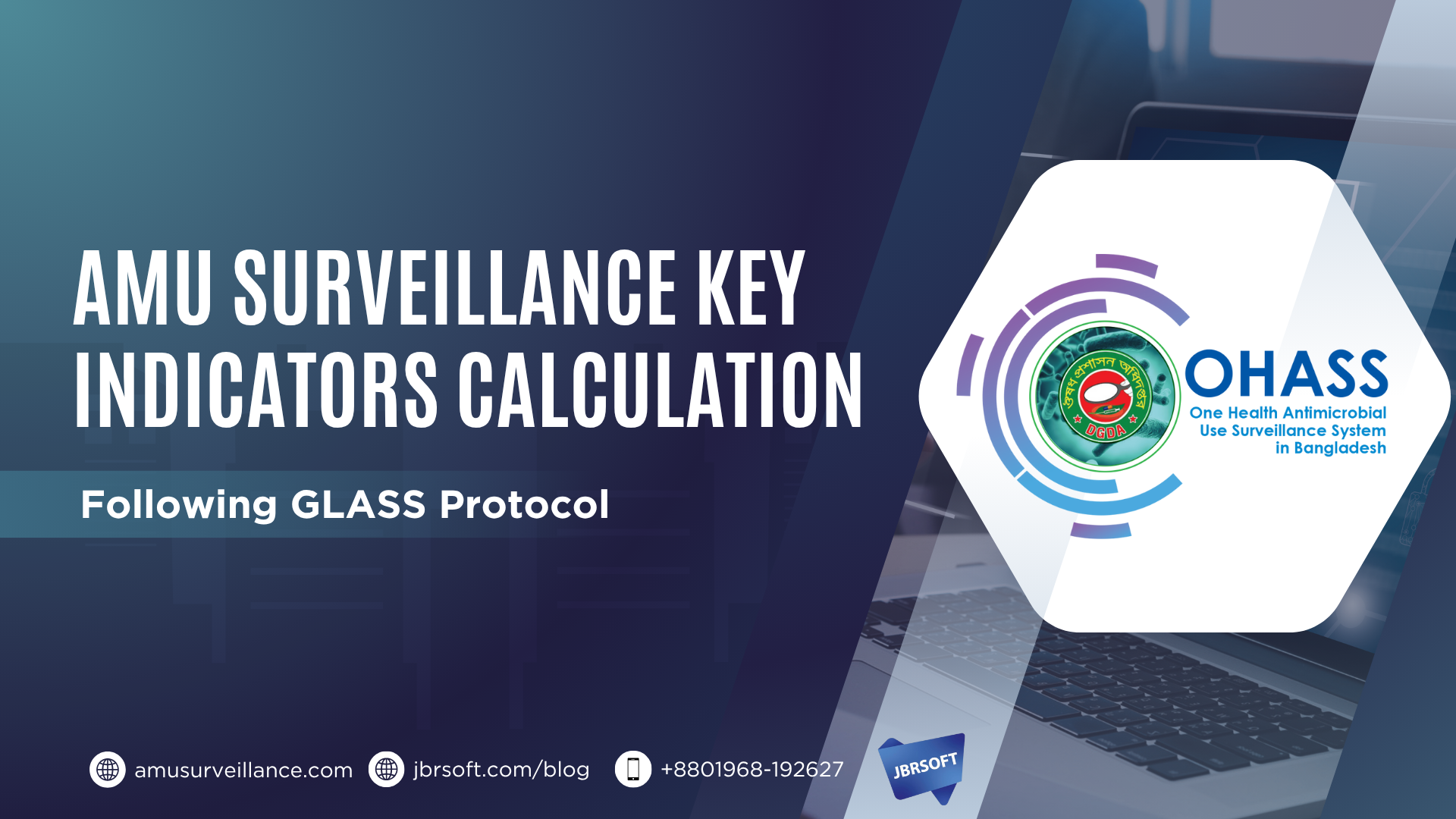Monitoring antimicrobial use (AMU) is essential for tackling antimicrobial resistance (AMR). The Defined Daily Dose (DDD) and DDD per 1,000 inhabitants per day (DID) are standardized indicators recommended by the World Health Organization (WHO) under the Global Antimicrobial Resistance and Use Surveillance System (GLASS). These metrics allow countries and stakeholders to track trends, compare data, and guide interventions. In this article, we will walk you through the calculations and provide a real-world example to help illustrate their practical application.
In this article, we’ll walk through:
1. What DDD and DID mean
2. How to calculate them
3. Other important AMU indicators
4. How these are integrated into the AMU Surveillance Platform
What is a Defined Daily Dose (DDD)?
DDD is the assumed average maintenance dose per day for a drug used for its main indication in adults. The WHO Collaborating Centre for Drug Statistics Methodology (WHOCC) assigns a DDD for each antimicrobial agent.
For example:
1. Amoxicillin (oral) has a DDD of 1 gram (g)
2. Ceftriaxone (injectable) has a DDD of 2 grams
What is DID (DDD per 1,000 Inhabitants per Day)?
DID = (Total DDDs used in a year × 1,000) ÷ (Population × 365)
This metric helps normalize AMU data across different countries and populations.
How to Calculate DDD and DID: A Step-by-Step Guide
Step 1: Gather national-level AMU data
Sources of data may include:
1. National production records
2. Import data from customs
3. Sales data from pharmaceutical distributors
4. Consumption data from hospitals or pharmaciesFor this example, let’s assume the following import data was collected from pharmaceutical companies in 2024:
Step 2: Calculate Total DDDs
For Amoxicillin:
- Each capsule = 0.5 g
- WHO DDD = 1 g
- DDDs = (500,000 capsules × 0.5 g) ÷ 1 g = 2,500,000 DDDs
For Ceftriaxone:
- Each vial = 1 g
- WHO DDD = 2 g
- DDDs = (2,000,000 vials × 1 g) ÷ 2 g = 1,000,000 DDDs
Step 3: Calculate DID
Assuming Malaysia’s population = 33 million:
Amoxicillin DID
= (2,500,000 DDDs × 1,000) ÷ (33,000,000 × 365)
≈ 0.21 DID
Ceftriaxone DID
= (1,000,000 DDDs × 1,000) ÷ (33,000,000 × 365)
≈ 0.08 DID
Other Important Indicators
- % of Access, Watch, Reserve (AWaRe) groups: Calculate the percentage contribution of Access, Watch, and Reserve antibiotics to total DDDs to assess alignment with stewardship principles.
- Parenteral vs. Oral usage: Compare DDDs from oral and injectable forms to assess prescribing patterns.
- Top 10 antibiotics by consumption: Useful for monitoring high-use agents and potential overuse.
How This Supports AMUSurveillance.com
At AMUSurveillance.com, we are building automated dashboards that:
1. Convert raw import/manufacturing data into DDD and DID
2. Visualize AMU trends over time and by drug class
3. Benchmark national data against WHO standards
4. Provide AWaRe classification insights
5. Support One Health integration (human, animal, environment)
These calculations form the core of our reporting engine, ensuring evidence-based policy and antibiotic stewardship efforts.
Conclusion
Understanding and applying DDD and DID is fundamental to tracking antimicrobial consumption. Through collaboration with Ministries of Health, pharmaceutical regulators, and research institutes, platforms like AMUSurveillance.com aim to make AMU data collection and analysis more streamlined, transparent, and impactful—starting with tools aligned to the WHO GLASS AMU Surveillance Protocol.
References
1. WHO GLASS Protocol on Surveillance of Antimicrobial Consumption (2021) https://www.who.int/publications/i/item/9789240018756
2. ATC/DDD Index 2024 – WHO Collaborating Centre for Drug Statistics Methodology https://www.whocc.no/atc_ddd_index/
3. OIE Annual Report on Antimicrobial Agents Intended for Use in Animals (2022) https://www.woah.org/en/what-we-do/global-initiatives/antimicrobial-resistance/
4. Antimicrobial Resistance Collaborators (2022). Global burden of bacterial antimicrobial resistance in 2019: a systematic analysis. The Lancet.https://doi.org/10.1016/S0140-6736(21)02724-0
🖋️ Written by:
The JBRSOFT AMR Informatics Team
Empowering Health Systems through Digital Innovation
Follow Our WorkTo stay informed about our latest innovations in health systems and digital transformation, follow JBRSOFT Limited on:
🌐 Website: https://jbrsoft.com
🔵 LinkedIn: linkedin.com/company/jbrsoft
📘 Facebook: https://www.facebook.com/jbrsoft
🐦 Twitter: https://x.com/Jbrsoft10
If you are interested in a similar business case, feel free to contact us: Email: management[@]jbrsoft.com, Direct: +8801968-192627.
#AMRSurveillance #DDD #DID #AMUIndicators #AntibioticStewardship #GlobalHealth #OneHealth #HumanHealth #GLASS #AMUSurveillance #HealthDataAnalytics

